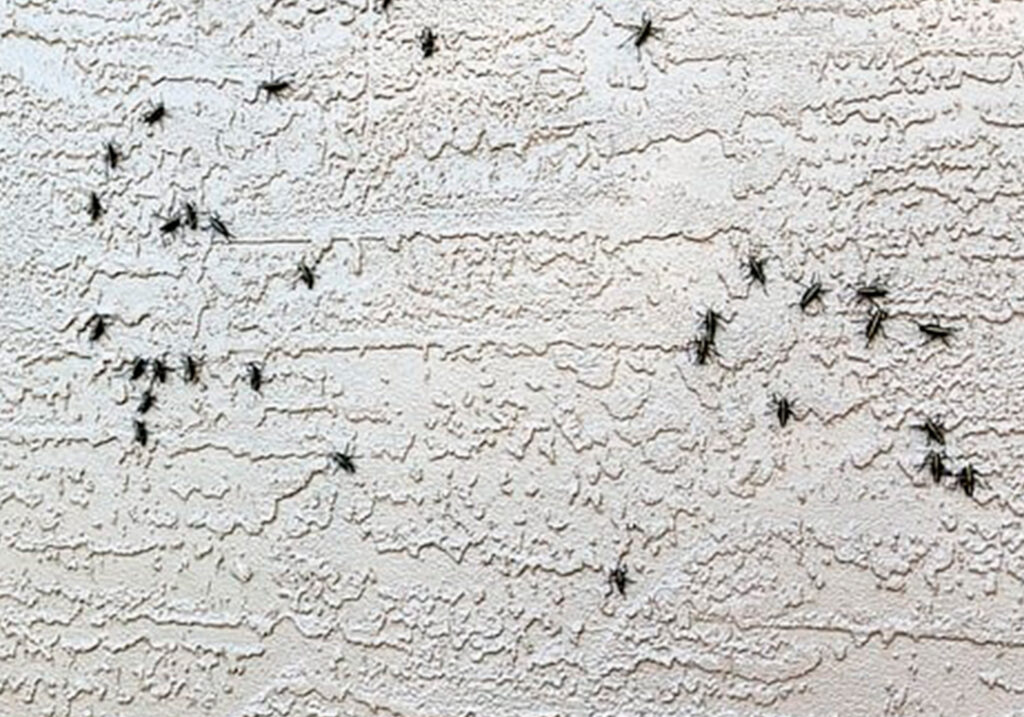Since the beginning of time, pests have been, well, pests! They bring diseases, destroy property, and ruin food. That is why homeowners. In order to protect their families, should prevent pest infestation at all costs.
Understanding the Threat of Pests in Construction
Pests can cause significant damage to buildings, leading to costly repairs and maintenance. Traditional structures made from wood and other organic materials are particularly vulnerable to infestations from termites, rodents, and insects. These pests can compromise structural integrity, create health hazards, and lead to long-term property deterioration. Homeowners and business owners must constantly battle infestations, implementing pest control measures that can be expensive and time-consuming.
Metal structures, however, offer a solution to these common problems. Unlike wood, which can attract termites and carpenter ants, metal does not provide a food source for pests. Rodents also struggle to gnaw through metal, reducing the risk of structural damage from burrowing and nesting. As a result, metal buildings provide a long-lasting and durable option for residential, commercial, and industrial purposes without the constant worry of pest infestations.
By choosing pest-resistant metal structures, property owners can significantly reduce their reliance on pesticides, fumigation, and extermination services. This not only lowers maintenance costs but also minimizes the impact of harmful chemicals on the environment. The durability and resilience of metal structures make them an attractive investment for those looking to avoid the ongoing battle against destructive pests.
Resistance to Termites and Insects
One of the most significant advantages of metal structures is their resistance to termites and wood-boring insects. Termites are among the most destructive pests, causing billions of dollars in damage each year. They feed on cellulose found in wood, weakening structures and making them unsafe over time. Wooden buildings require regular termite treatments, inspections, and protective coatings to prevent infestations.
Metal structures eliminate this problem entirely, as steel and aluminum contain no organic materials that termites or other wood-boring insects can consume. This resistance provides peace of mind to property owners, ensuring that their buildings remain structurally sound without the need for expensive pest control measures. Additionally, eliminating wood from a structure significantly reduces the chances of hidden infestations, which often go unnoticed until severe damage has already occurred.
Even in areas where termite activity is high, metal buildings provide superior protection. They can be used for homes, barns, warehouses, and agricultural facilities without the risk of pest-related degradation. By investing in a metal structure, property owners save money on long-term maintenance while also avoiding the stress of dealing with destructive insect infestations.
Rodent and Wildlife Deterrence
Rodents such as mice and rats pose a serious threat to traditional structures, particularly those made from wood or materials that can be easily chewed through. Rodents gnaw on wood, insulation, and wiring, creating potential fire hazards and structural weaknesses. Additionally, they carry diseases and parasites that can pose health risks to humans and animals.
Metal structures provide an effective solution to rodent problems. Unlike wood, steel and aluminum are impenetrable to rodents, preventing them from chewing their way inside. Metal buildings also have fewer gaps and entry points, making it more difficult for rodents to find shelter. With proper sealing and design, metal structures can create a pest-free environment, reducing the need for traps, poisons, and extermination services.
For agricultural and storage facilities, rodent control is crucial to protecting stored goods and equipment. A metal barn, for instance, prevents rodents from accessing animal feed, reducing contamination and waste. In industrial settings, metal structures help protect inventory and machinery from rodent damage, saving businesses from costly repairs and product loss.
Mold and Mildew Prevention
Beyond deterring insects and rodents, metal structures also help prevent mold and mildew growth. Traditional wood and drywall-based structures are prone to moisture retention, creating an ideal environment for mold to thrive. Mold growth can lead to respiratory issues, structural damage, and unpleasant odors, making it a serious concern for homeowners and businesses alike.
Metal buildings, on the other hand, are less susceptible to moisture-related problems. Steel and aluminum do not absorb water like wood, reducing the likelihood of mold formation. With proper insulation and ventilation, metal structures can maintain dry, well-ventilated interiors that discourage mold and mildew growth. This benefit is particularly important in humid climates, where excess moisture can quickly lead to extensive damage in traditional buildings.
By choosing a metal structure, property owners can avoid costly mold remediation and health hazards associated with poor air quality. Maintaining a dry and mold-free environment contributes to better indoor air quality and overall structural integrity, making metal buildings a smart investment for long-term use.
Low Maintenance Requirements
One of the key benefits of metal structures is their low maintenance requirements. Since they are naturally resistant to pests, mold, and rot, metal buildings require fewer repairs and treatments over time. Traditional wooden structures need regular termite inspections, sealing, and replacement of damaged materials to maintain their integrity.
Metal structures, by contrast, require only occasional inspections for rust or minor wear and tear. With protective coatings such as galvanized steel or powder coatings, metal buildings can withstand harsh weather conditions without significant deterioration. This reduced maintenance means lower costs and less time spent on upkeep, making metal structures an economical choice for homeowners and businesses.
The durability of metal also ensures a longer lifespan compared to traditional materials. A well-constructed metal building can last several decades with minimal maintenance, providing property owners with a long-term, cost-effective solution for storage, housing, or commercial use.
Environmental Benefits of Pest-Resistant Metal Structures
In addition to financial and structural advantages, pest-resistant metal structures also offer environmental benefits. Traditional pest control methods often involve the use of chemical treatments, which can be harmful to the ecosystem. Pesticides and fumigation contribute to pollution, contaminating soil and water sources. By eliminating the need for these treatments, metal buildings promote a healthier environment.
Steel is also a recyclable material, making it an eco-friendly choice for construction. When a metal building reaches the end of its lifespan, its materials can be repurposed and reused, reducing construction waste. This sustainability aspect makes metal structures an attractive option for those looking to minimize their environmental footprint.
Additionally, metal buildings contribute to energy efficiency when properly insulated. Modern metal construction techniques incorporate energy-efficient designs that help regulate indoor temperatures, reducing the need for excessive heating and cooling. By choosing a metal structure, property owners can create a more sustainable and eco-friendly living or working environment.
Versatility in Various Applications
The pest-resistant nature of metal structures makes them suitable for a wide range of applications. From residential homes and garages to agricultural barns and industrial warehouses, metal buildings offer superior protection against pests. Their durability, low maintenance, and resistance to infestations make them an ideal choice for different environments.
For agricultural use, metal barns and storage facilities help protect livestock feed, crops, and equipment from rodent contamination. Farmers can store grains and hay without worrying about pests ruining valuable supplies. Similarly, in commercial and industrial settings, metal warehouses and storage units provide secure spaces for inventory, minimizing losses caused by pest-related damage.
Even in residential applications, metal structures offer homeowners a durable, pest-free alternative for garages, sheds, and even full-scale homes. With customizable designs and modern finishes, metal buildings can be aesthetically pleasing while still offering superior protection against pests.
Conclusion
Pest-resistant metal structures provide a wide range of benefits that make them a superior choice for construction. By eliminating the risk of termite infestations, rodent damage, and mold growth, metal buildings offer a durable and low-maintenance solution for homeowners, businesses, and agricultural operations. Their long lifespan, environmental benefits, and cost-effectiveness make them an excellent investment for those seeking reliable and pest-free building options.
Whether you need a storage facility, a commercial warehouse, or a residential home, metal structures provide unmatched protection against common pests. With proper insulation and ventilation, they offer a comfortable, safe, and long-lasting space that requires minimal upkeep. Choosing a metal structure ensures peace of mind, knowing that your property is protected from the costly damage caused by pests and environmental factors.

